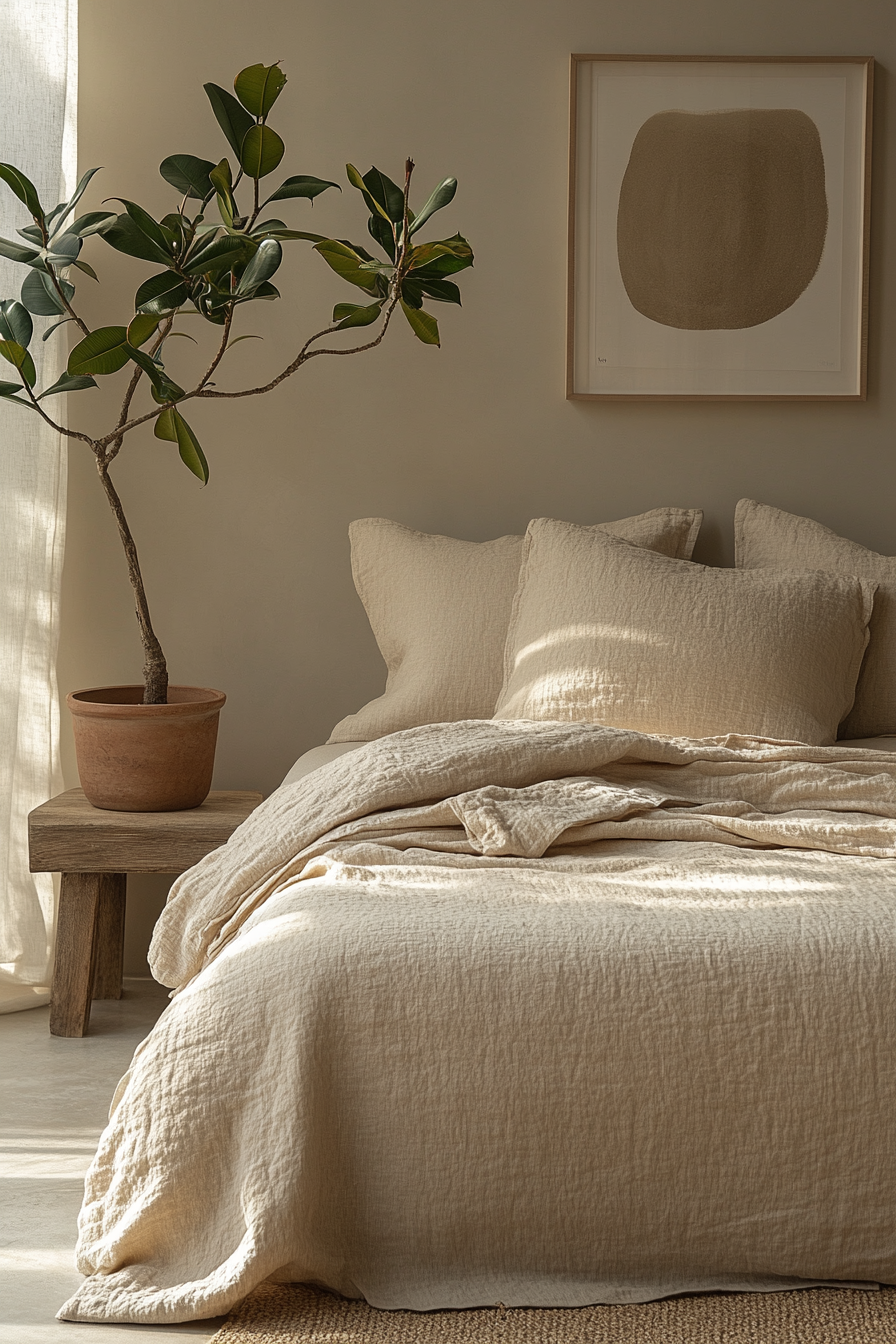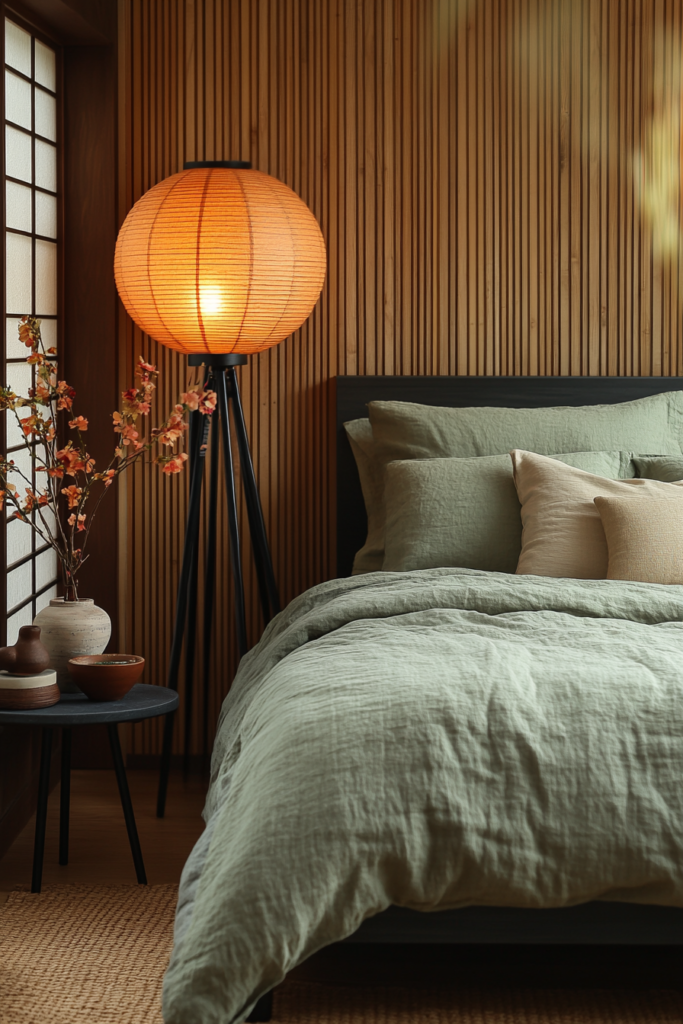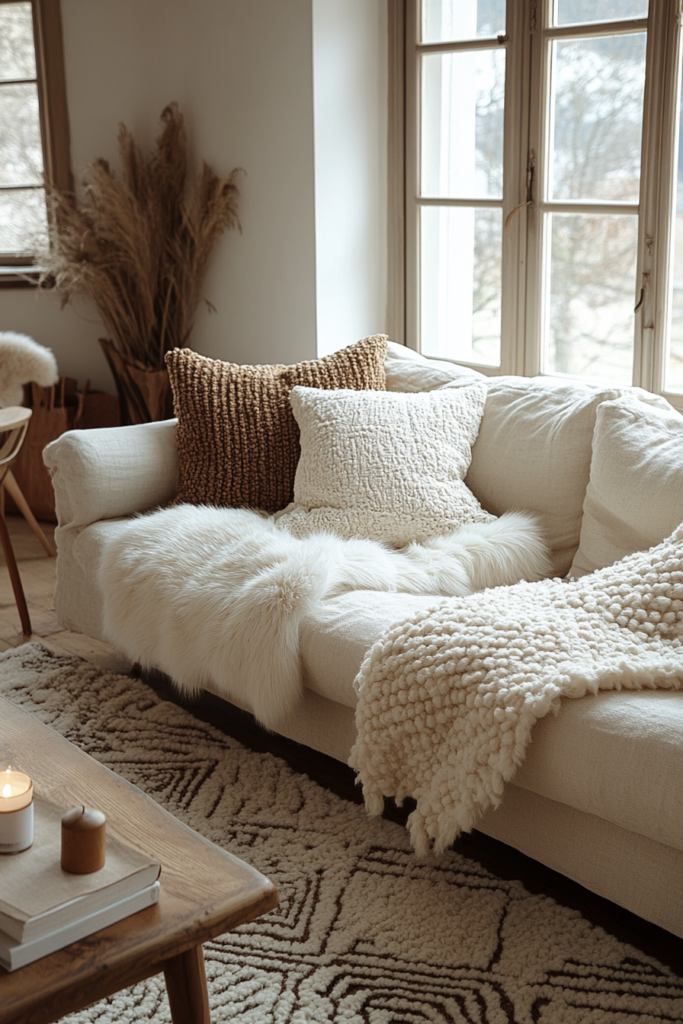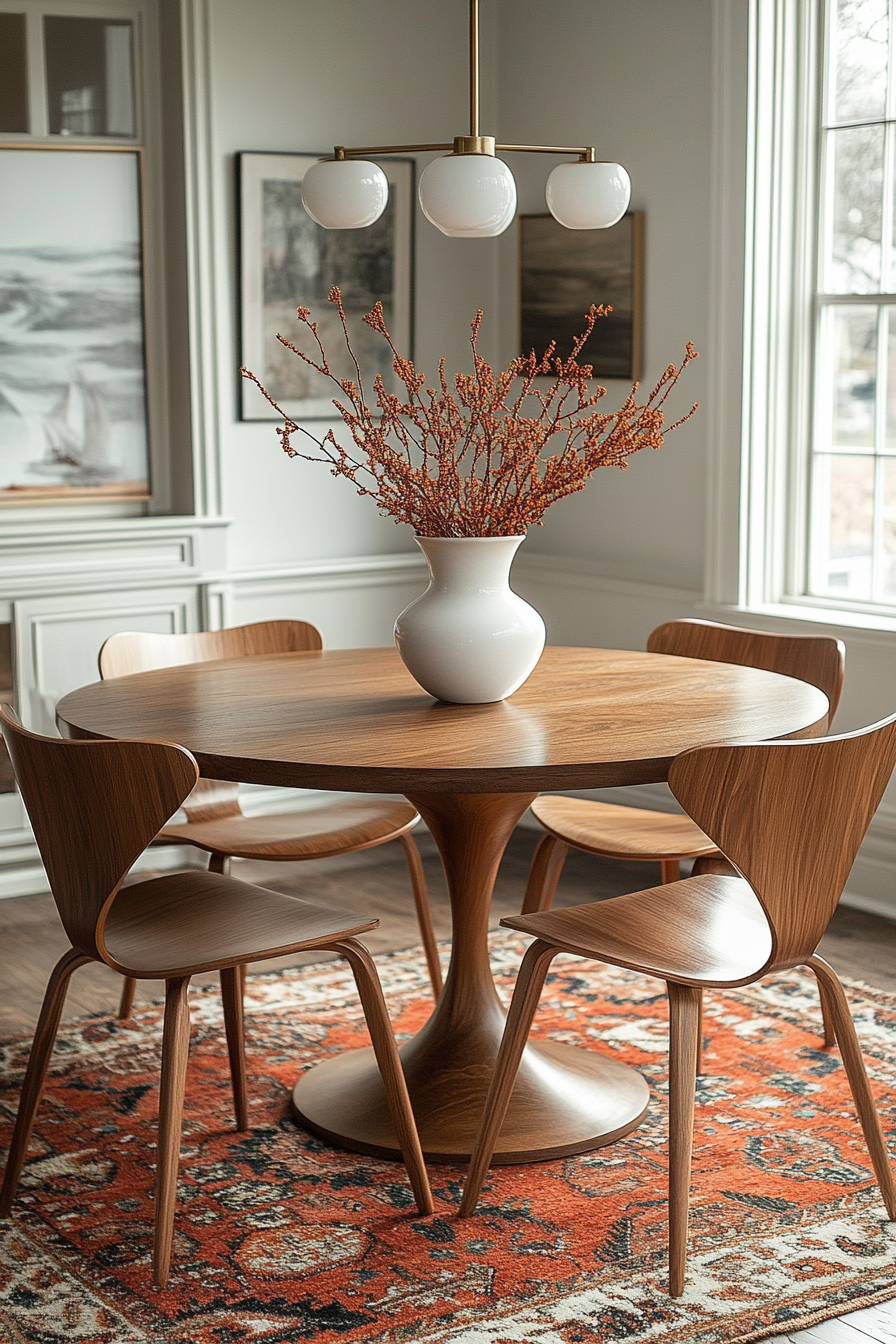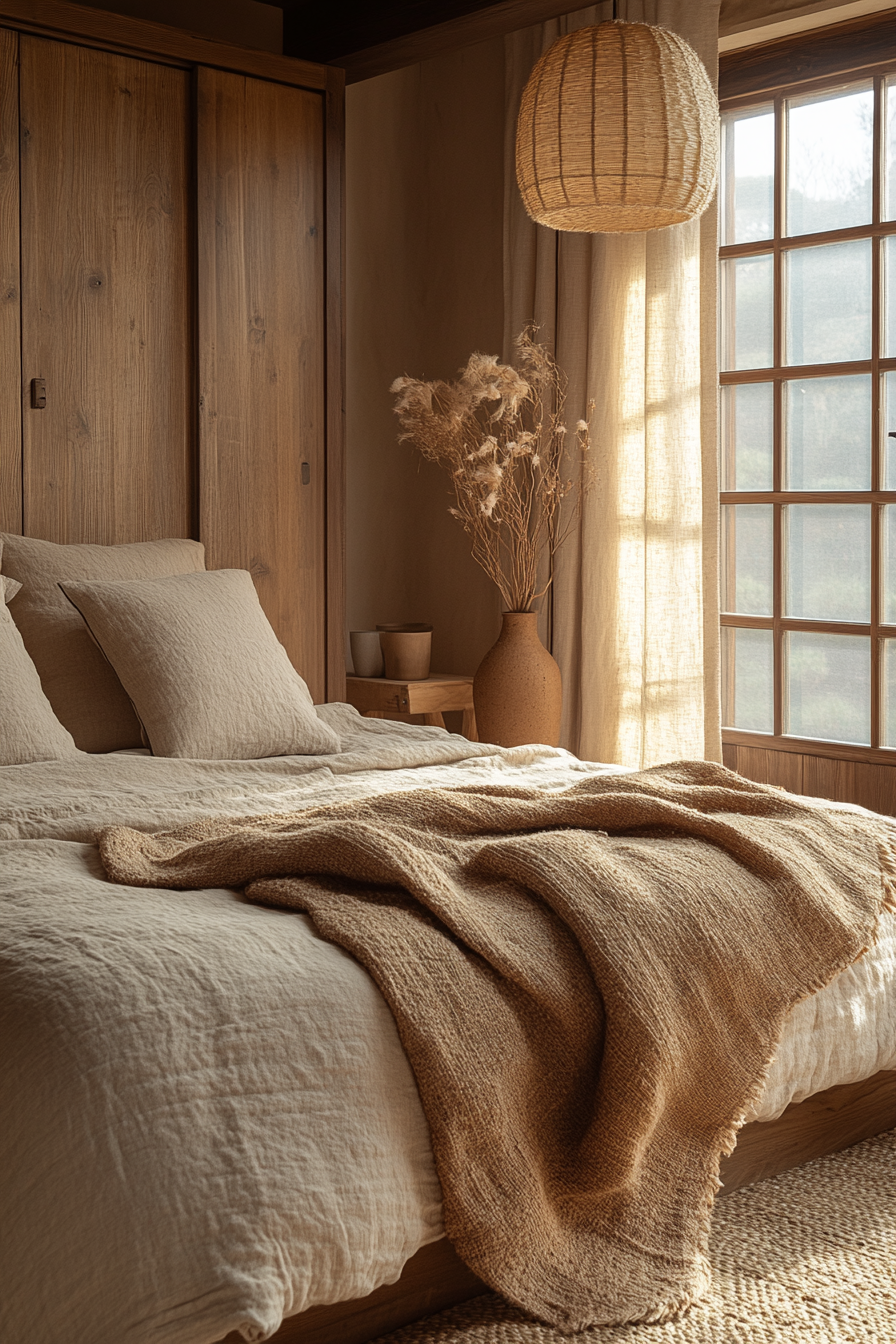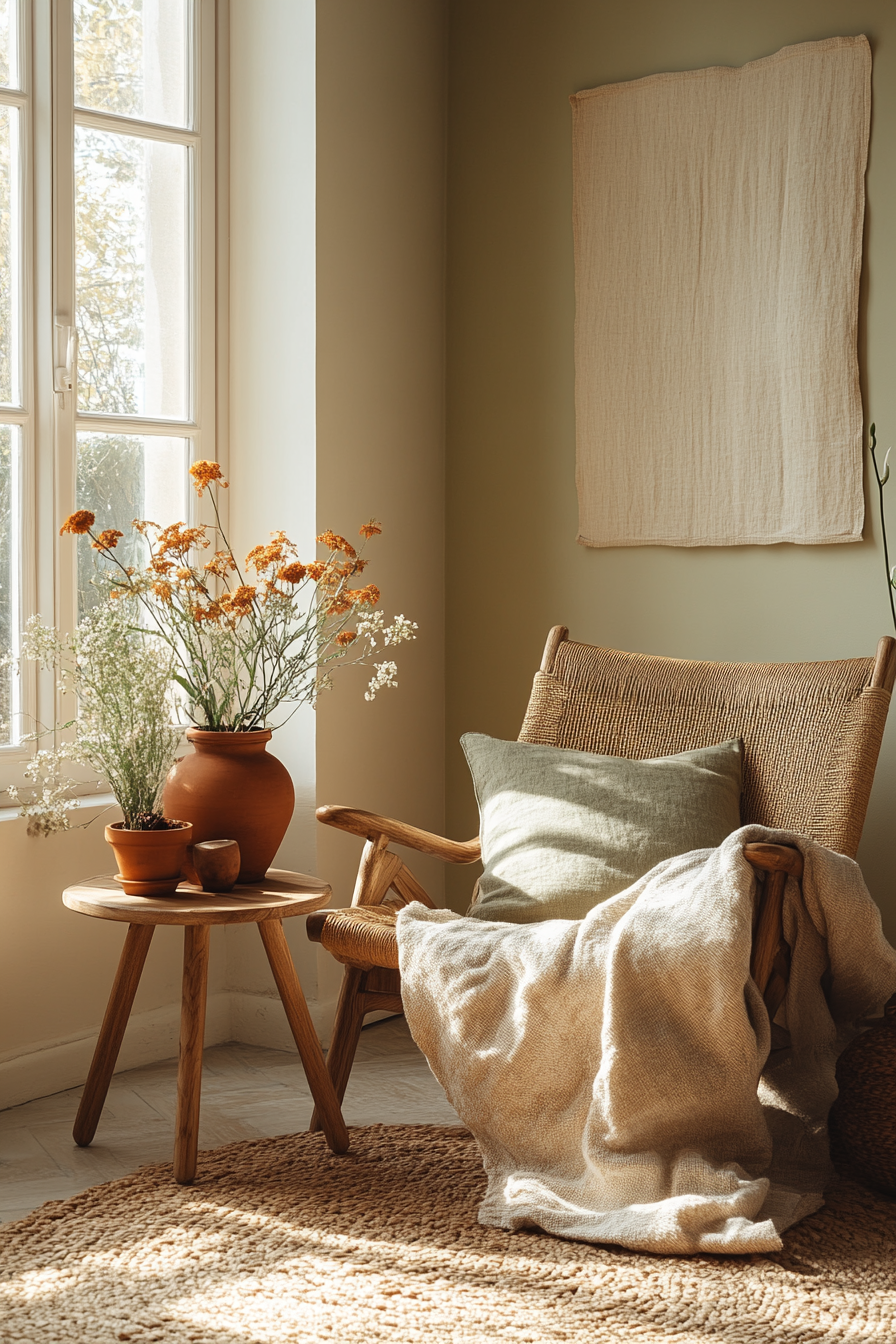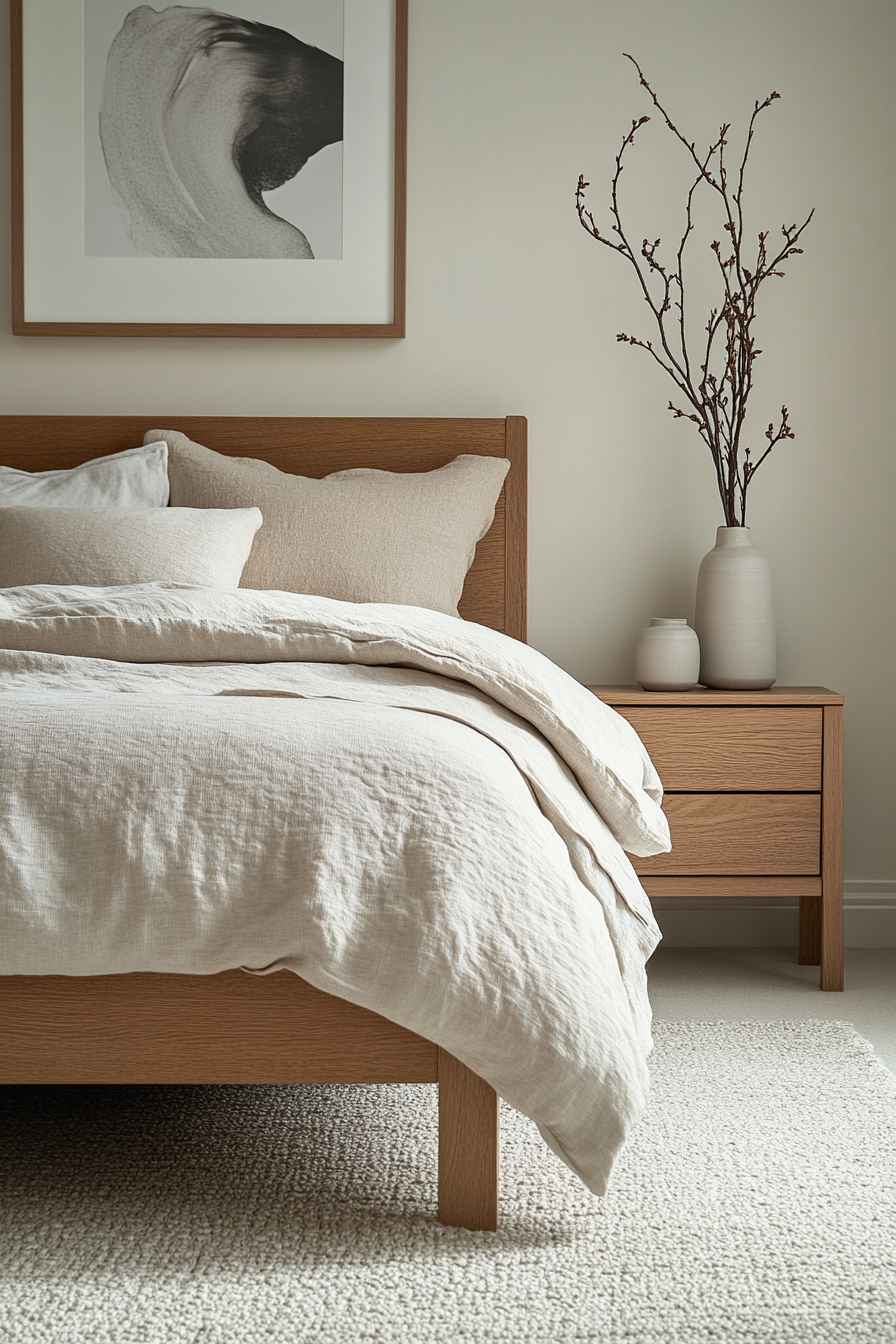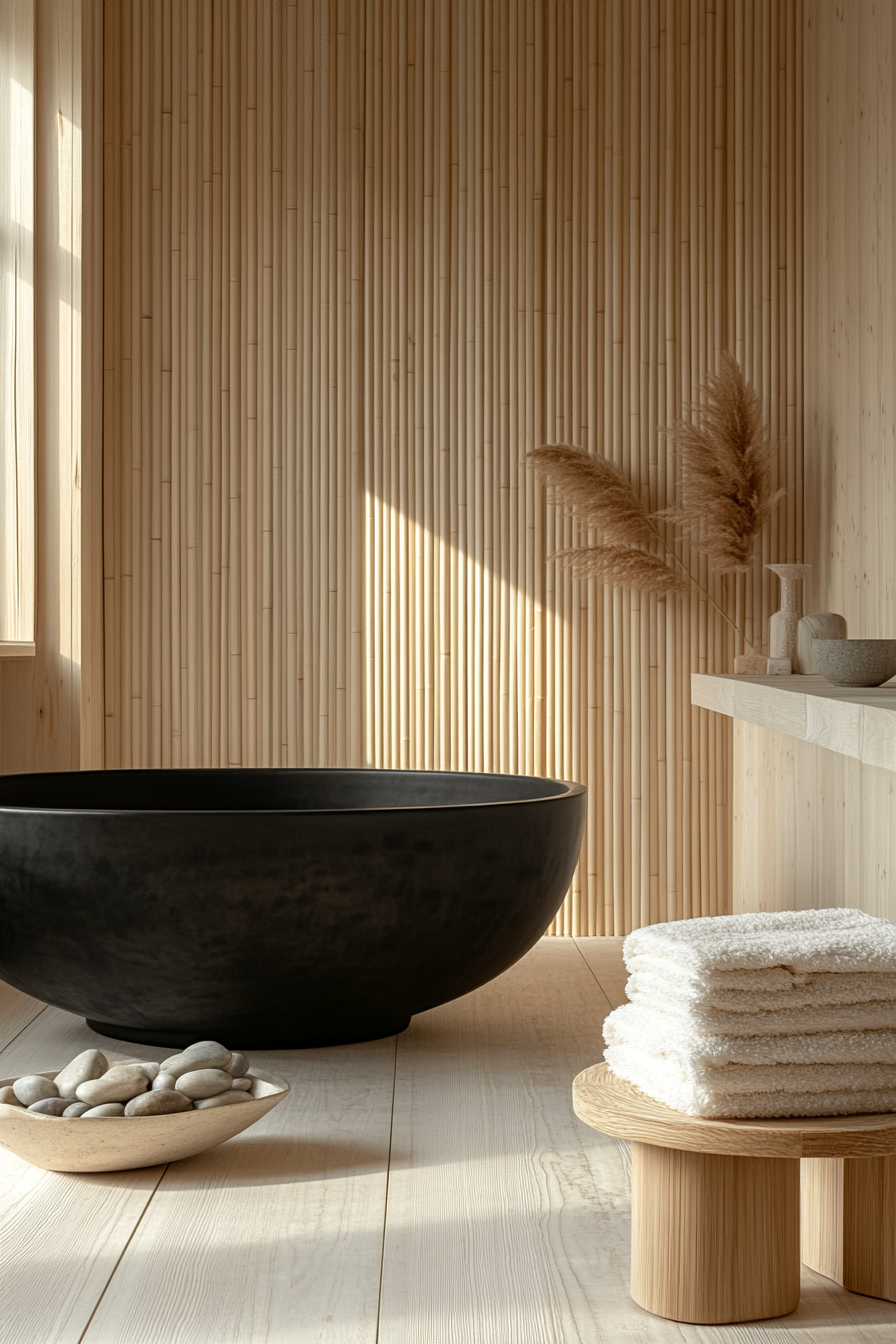Dreaming of a bedroom that feels like a calming retreat? Japandi bedroom design blends minimalist Japanese elegance with cozy Scandinavian warmth. In this guide, you’ll discover practical tips and beautiful ideas to create your own serene, stylish sanctuary!
If you dream of a bedroom that feels like a tranquil retreat—a space where minimalism meets coziness—then Japandi design might just be your perfect match. This interior design trend harmoniously blends the sleek functionality of Japanese aesthetics with the warmth of Scandinavian style, creating a balanced and serene environment. In this article, I’ll guide you through the essentials of Japandi bedroom design, from key principles to must-have elements, so you can create your own Zen-inspired sanctuary.
What Is Japandi Design?

The Fusion of Two Styles
Japandi is the perfect marriage of two design philosophies that prioritize simplicity and intentionality. Japanese interiors focus on mindfulness, clean lines, and natural elements, while Scandinavian design brings warmth, comfort, and hygge (that wonderful feeling of coziness). Together, they form Japandi, a style that’s minimalist yet inviting, functional yet elegant.
I first fell in love with Japandi when I was trying to declutter my own bedroom. After years of accumulating mismatched furniture and decor, I craved a space that felt calm and cohesive. Japandi showed me that less really is more when it comes to creating a haven of relaxation.
Why Japandi Works for Bedrooms
Bedrooms are meant to be restful and rejuvenating, and Japandi delivers on both fronts. By eliminating clutter and focusing on natural materials and soothing tones, this style creates an environment that helps you unwind at the end of the day. It’s about cultivating peace through design—and who doesn’t need a little more of that?
Key Principles of Japandi Bedroom Design

Minimalism with Purpose
At the heart of Japandi is a commitment to minimalism. But this isn’t the cold, stark minimalism you might associate with some modern styles. In Japandi, every piece in your bedroom serves a purpose—whether it’s functional, aesthetic, or both. Picture a tidy bedside table holding just a beautiful ceramic lamp and a book you’re reading. That’s the essence of Japandi.
Pro tip: Start by decluttering. If an item doesn’t bring you joy or serve a function, it’s time to let it go. You’ll be amazed at how much lighter your room (and your mind) feels.
Natural Materials and Textures
Japandi embraces the beauty of natural materials. Think warm wood tones, soft linens, and organic textures like bamboo or stone. These elements ground your space and make it feel connected to nature.
When I revamped my bedroom, I swapped out my synthetic bedding for linen sheets and added a woven jute rug. The difference was incredible! The room instantly felt cozier and more inviting, without feeling busy.
Neutral Color Palette
The Japandi color palette is all about calming, muted tones. Soft whites, warm beiges, earthy taupes, and gentle greys create a serene backdrop. Darker accents like charcoal or black can add depth and sophistication, but the overall vibe should remain light and airy.
To avoid monotony, play with subtle variations in shade and texture. For example, pair a smooth beige bedspread with a chunky knit throw in a slightly darker hue. The contrast will add visual interest without disrupting the tranquility.
Functionality First
Everything in a Japandi bedroom should have a purpose. Furniture is clean-lined and often multifunctional, like a bench that doubles as storage or a nightstand with built-in drawers. This focus on functionality ensures your space remains practical and clutter-free.
A Connection to Nature
Nature plays a big role in Japandi design. From potted plants to large windows that let in natural light, the goal is to bring the outdoors in. Even small touches, like a vase of fresh greenery or a wooden tray, can make a big difference.
When I added a snake plant to my bedroom, not only did it enhance the look, but it also improved the air quality—a win-win!
Step-by-Step Guide to Creating a Japandi Bedroom

Start with a Neutral Base
Your walls and floors set the tone for your Japandi bedroom, so begin with a neutral color palette. Soft white or light beige walls work beautifully as a backdrop. For flooring, consider wood or a wood-look laminate in a light or medium tone.
Adding a natural fiber rug, like jute or wool, can anchor the space and add a layer of texture. It’s the perfect foundation for your Japandi oasis.
Select Simple, Functional Furniture
When choosing furniture, prioritize pieces with clean lines and a minimalist design. A low-profile wooden bed frame is a staple of Japandi style, as are simple nightstands and dressers.
If you’re tight on space, look for multifunctional furniture like a storage bench or a bedside table with drawers. Remember, simplicity doesn’t mean sacrificing practicality!
Incorporate Natural Materials
Natural materials are key to bringing warmth into a Japandi bedroom. Opt for linen bedding in neutral hues, and consider layering with a wool or cotton throw for added comfort. Woven baskets can be used for storage while doubling as decor, and wooden accents like picture frames or trays help tie the look together.
Layer Textures for Comfort
Although Japandi design leans minimalist, it’s far from cold. Adding layers of texture—from a chunky knit blanket to a softly textured rug—creates a cozy, inviting atmosphere. Play with different fabrics and finishes, like pairing a smooth ceramic vase with a rough-hewn wooden tray, to add visual interest.
Maximize Natural Light
Natural light is an essential element of Japandi design. Keep your window treatments light and airy—sheer curtains or blinds in natural fabrics like linen are ideal. If privacy is a concern, choose light-filtering shades that still let in plenty of daylight.
Add Meaningful, Minimal Decor
In Japandi, less is more when it comes to decor. Choose a few intentional pieces, like a single piece of abstract art or a carefully curated collection of ceramics. Greenery, such as a potted fiddle leaf fig or a small bonsai tree, adds life and vibrancy to the space.
Styling Ideas for a Japandi Bedroom
Perfecting the Bed Setup
The bed is the focal point of any bedroom, and in Japandi design, it should feel serene and inviting. Use neutral-toned linen bedding for a soft, natural look, and layer with a textured throw in a contrasting color. Keep pillows minimal—two to four neatly arranged cushions are plenty.
Greenery and Natural Touches
Plants are a simple way to bring nature indoors. Consider a snake plant or peace lily for a bedside table, or opt for a larger statement plant like a fiddle leaf fig. Use minimalist planters in matte finishes or natural materials to keep the look cohesive.
Lighting for Ambiance
Lighting plays a big role in setting the mood for your Japandi bedroom. Opt for warm, ambient lighting with simple designs, like a paper lantern pendant or a ceramic table lamp. Candles in neutral holders can also add a touch of cozy charm.
Japanese-Inspired Details
Incorporate subtle nods to Japanese culture, like a tatami mat, shoji screen, or a ceramic tea set. These elements add authenticity without overwhelming the space.
Creating a Japandi bedroom is more than just a design project—it’s a chance to craft a space that feels peaceful, intentional, and restorative. By focusing on simplicity, natural materials, and meaningful decor, you can transform your bedroom into a true sanctuary. For even more tips, check out my article on How to Create a Japandi Bedroom: The Perfect Blend of Scandi and Japanese Design.
If you found this guide helpful, I’d love to hear your thoughts! Leave a comment below with your favorite Japandi design ideas, share this article with a friend who’s redecorating, or pin it to your favorite Pinterest board for inspiration. Don’t forget to follow me on Pinterest for more dreamy design tips and ideas!


